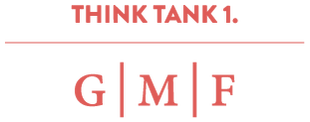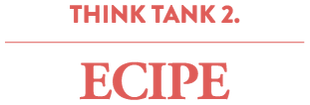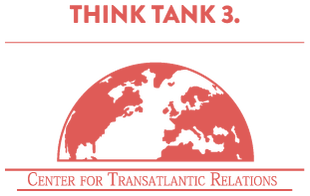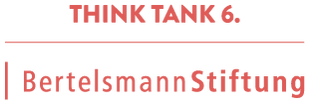Together with Tomas Vanheste and journalists from the Platform for Authentic Journalism, we tried to deepen our understanding of the role these think tanks play in the debate on TTIP. We asked ourselves which think tanks were involved in the discussions about the proposed free trade agreement and what function they fulfil. Our aim was to discover whether think tanks really are objective, scientific and independent organizations or whether there are other, hidden interests at play.
That resulted in the following story:
Journalists Bas van Beek, Sophia Beunder, and Jilles Mast spent months sifting through data about the TTIP lobby and think tanks. In this piece they explain how that worked.
Why specifically these think tanks?
The first question that we faced during this research was what a think tank actually is. How do you define something like that? After all, there are thousands of think tanks around the world that have different areas of expertise, different ways of approaching their work, and different funding models.
Of course, we’re not the first to have asked this question. It’s still a hotly debated topic in academic circles. After reviewing the literature, we decided it made much more sense to look at what think tanks do instead of what they are.
The more extensive a think tank’s network, the better it can convey its views to the people that matter
Two functions stand out in particular. First, think tanks deal with content. After all, research is their business. They produce reports, provide policy recommendations, and think about social issues at an academic level. That’s why think tanks are sometimes referred to as “universities without students.” Their second function is to maintain and set up networks. The more extensive a think tank’s network, the better it can convey its views to the people that matter.
Bearing this in mind, we selected seven think tanks, the most important criterion being that they were actively involved in the area of TTIP. We looked at whether the think tanks were organizing events about the agreement and whether they regularly published research on it. Six of the seven think tanks in this research are some of the ones most actively involved in the area of TTIP.
In some ways, the Centre for Economic Policy Research (CEPR) is an exception because it hasn’t engaged particularly vigorously in the debate. On the other hand, it penned the most important and influential report on the agreement, which is why we decided to select them in the end.
Collecting the data
After selecting the think tanks, we began to collect data. We used KUMU to gather our data, and it turned out to be the ideal online tool for mapping out networks. KUMU uses elements and connections to generate results. The elements we used were people, businesses, think tanks, governments, other organizations (for example, non-governmental organizations and universities), publications, and events.
We then added connections, including information about the nature of the relationship – the role of “speaker,” for example, between a person and an event, or the amount of sponsorship that exists between a business and a think tank. You can access this entire database online now.
Our research focused on four things. First, we looked at funding. Where do think tanks get their money from, and how much of it comes from the business community? We then put the hundreds of corporate sponsors that we retrieved from think tanks’ sites next to a Corporate Europe Observatory list. This enabled us to see which of these businesses had already approached, or lobbied, the European Commission about their interest in TTIP. Because businesses also lobby through interest groups such as BusinessEurope, the European Services Forum, and the TransAtlantic Business Council, these organizations and their members were also incorporated in the analysis.
We devoted special attention to board members’ connections with the business community
We then looked at the board members of the think tanks, in order to map out their networks. Who are these people and what are their backgrounds? We devoted special attention to board members’ connections with the business community. Although we also introduced other kinds of connections in most cases – with universities or other think tanks for example – we examined these less rigorously. We chose this approach because the fact that a board member is the CEO of some multinational or other is in our opinion more relevant than whether they also serve on the board of the local hospital in their free time – as noble as that may be.
Third, we focused on events organized by these think tanks. Because think tanks like to flaunt their contribution to the debate, we looked at the speakers who were invited to these events. Who are these people and who do they represent? These meetings are also important for maintaining the networks of the think tanks. Meetings remain an important way of exerting influence, and these kinds of events, especially the closed ones, provide the opportunity to do so.
The fourth part of this research is about the publications put out by these think tanks. Sometimes they are weighty tomes, other times they are policy recommendations only a few pages long. The primary aim here was to show that these think tanks regularly put out publications on TTIP. We subsequently analyzed in more detail precisely what they publish.
What problems did we encounter?
The biggest problem that we encountered was the result of having initially chosen the wrong tool to map out the network. We started by using detective.io, created by a French collective that has since gone bankrupt. After a few months of encountering numerous other, smaller problems, it became clear at a certain point that this software simply couldn’t handle such a large quantities of data. So we essentially wasted many hours of work. Our advice to anyone intending to conduct this kind of data research is to take the time to choose the right tool. We certainly can recommend KUMU for similar projects.
The think tanks’ websites, which is where we ultimately gathered much of our information, posed another problem. These sites were often difficult to search, hard to scrape , or incomplete. We also had to deal with updates, which sometimes caused us to lose the source of the data we had collected. For example, the Center for Transatlantic Relations’ schedule of events for the past three years vanished at a certain point. We had to retrieve the information about events that they had organized from Facebook and Twitter. Four weeks prior to the publication of our article, the Atlantic Council think tank updated its entire list of members, right after we had entered, checked and double checked this list.
Information about think-tank sponsorship was also incomplete. In the case of the Center for Transatlantic Relations, we were eventually sent a list of sponsors, but it didn’t mention how much they had contributed. ECIPE has an agreement with its sponsors that their support will never be made public. We were unable to overcome this problem, so as a result our analysis of the money flows from the business community to think tanks is on the conservative side.
One final comment: The think tanks in question differ significantly from one another. The Atlantic Council, for example, has dozens of board members, most of whom are from the business community, while the Center for Transatlantic Relations doesn’t have a board at all. Or take CEPR: it didn’t organize a single TTIP event, whereas the German Marshall Fund organized as many as 38.
A selection of our results:

Key data for the German Marshall Fund
Sponsors of the German Marshall Fund

Key data for the European Centre for International Political Economy

Key data for the Center for Transatlantic Relations
Sponsors of the Center for Transatlantic Relations

Key data for the Centre for European Policy Studies
Sponsors of the Centre for European Policy Studies

Key data for the Centre for Economic Policy Research
Sponsors of the Centre for Economic Policy Research

Key data for the Bertelsmann Foundation

Key data for the Atlantic Council
Sponsors of the Atlantic Council
Want to use the data?
You’re more than welcome to use our data. All of the Excel files and raw data are available. We are also making all of the documents obtained through the Dutch freedom of information act available here too.
Several questions we weren’t able to ask in this project but would like to see answered include:
- How prevalent is the revolving door phenomenon in the think-tank world?
- What other publications exhibit potential traces of influence by sponsors?
- What role do think tanks play in debates about other policy issues, such as energy and defense?
Feel free to browse through the data in our KUMU visualization.
Detail of data in KUMU

If you have any questions about the choices we made in our research, the data, or the network analysis in KUMU, please contact us at info@authentiekejournalistiek.org.
This research was funded in part by SOMO, TNI, and the Democracy & Media Foundation.
English translation by Mark Speer and Erica Moore.
Download the freedom of information documents here For this story, we made numerous requests to European institutions under the Dutch freedom of information act. We are making the released documents publicly available through Document Cloud (posted as received: a mixture of English and Dutch). Download the data here Our data is available in spreadsheet files, which you can access through Google Drive. If you have any questions, please contact the Platform for Authentic Journalism.



